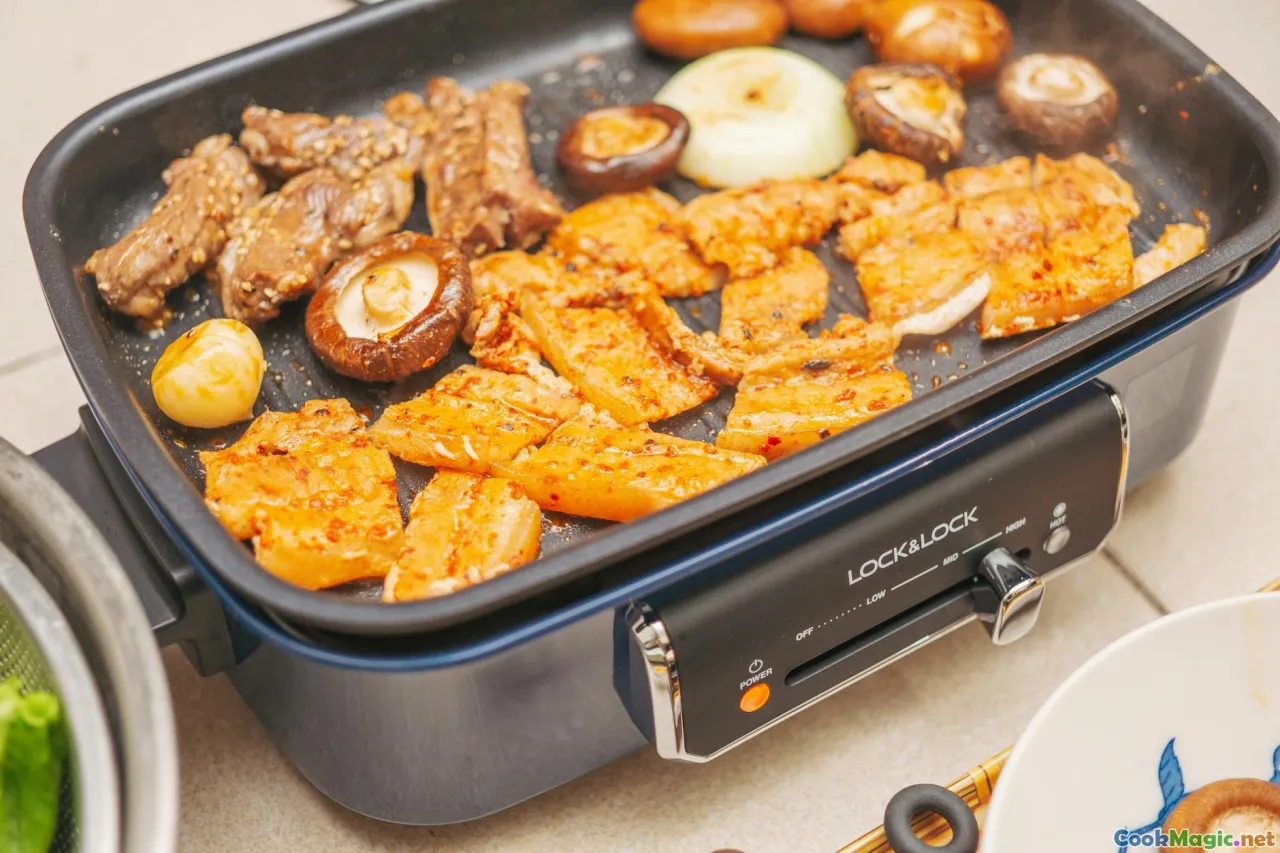A Guide to Korean BBQ Essentials
8 min read Discover the rich traditions, essential ingredients, and vibrant flavors that define authentic Korean BBQ experiences in this comprehensive guide. April 21, 2025 04:00
A Guide to Korean BBQ Essentials
Imagine the sizzle of thinly sliced meat hitting a hot grill, the tantalizing aroma of marinated spices filling the air, and the convivial atmosphere of friends and family gathered around a table—this is the heart of Korean BBQ. Rooted deeply in Korea’s rich culinary history, Korean BBQ is more than just a method of cooking; it’s a cultural experience that embodies community, tradition, and the celebration of flavors.
Introduction: The Allure of Korean BBQ
Korean BBQ is a sensory journey that engages your taste buds, olfactory senses, and social instincts. Unlike Western grilling traditions, Korean BBQ emphasizes communal dining, where each person becomes a chef, grilling their own selection of meats and vegetables right at the table. This interactive experience is as much about the act of cooking as it is about savoring the resulting dishes.
For many, Korean BBQ evokes nostalgic memories of family gatherings, festive celebrations, and late-night conversations. Its appeal lies in the balance of bold flavors, fresh ingredients, and the artistry of simplicity combined with complexity.
The Cultural and Historical Roots of Korean BBQ
Korean BBQ’s origins trace back centuries, evolving from the nomadic tribes who grilled meats over open flames, to the royal courts where elaborate marinated dishes were served. The modern style of Korean BBQ, characterized by tabletop grills and a variety of banchan (side dishes), gained popularity during the Joseon Dynasty (1392–1897), reflecting Korea’s agrarian lifestyle and emphasis on communal eating.
Throughout history, grilled meats have been a symbol of hospitality and celebration. Today, Korean BBQ has transcended its traditional roots, becoming a global phenomenon that showcases Korea’s culinary ingenuity.
Core Ingredients: Building Blocks of Korean BBQ
1. Meats: The Star of the Show
Korean BBQ is distinguished by its high-quality meats, meticulously prepared to highlight their natural flavors.
- Bulgogi (불고기): Thinly sliced beef marinated in a sweet and savory sauce made from soy sauce, sugar, sesame oil, garlic, and pear juice. The marinade tenderizes the meat and imparts a glossy, caramelized exterior when grilled.
- Samgyeopsal (삼겹살): Thick slices of pork belly, prized for their rich fat content and crispy texture when grilled. Usually served unmarinated, allowing the natural pork flavor to shine.
- Galbi (갈비): Beef short ribs, marinated in a soy-based sauce with sugar, garlic, and Asian pear, resulting in tender, flavorful ribs with a hint of sweetness.
- Chadolbaegi (차돌배기): Very thin slices of brisket that cook rapidly, perfect for quick grilling and dipping.
2. Vegetables and Side Ingredients
Fresh vegetables are essential, both as accompaniments and as wrapping ingredients.
- Lettuce and perilla leaves: Used to create wraps (ssam) with grilled meat.
- Garlic, green chili peppers, and onions: Often grilled alongside meats for added flavor.
- Kimchi: Fermented spicy cabbage that provides a tangy contrast.
- Pickled radish and other banchan: Add crunch and acidity to balance the richness.
3. Dipping Sauces and Condiments-Ssamjang: A thick, savory paste made from doenjang (fermented soybean paste), gochujang (red chili paste), garlic, sesame oil, and green onions.
- Soy sauce and sesame oil dip: Simple yet flavorful, often combined with chopped green onions.
- Salt and pepper: For seasoning grilled meats.
Essential Equipment for Authentic Korean BBQ
1. Tabletop Grill
A dedicated grill—either charcoal or gas—is central to the Korean BBQ experience. Charcoal grills lend a smoky flavor, reminiscent of traditional methods, while gas grills offer convenience.
2. Grill Tools
Tongs, skewers, and small scissors for cutting meat are standard tools. Some restaurants also use built-in grill tops with adjustable heat.
3. Banchan and Serving Dishes
A variety of small, colorful plates to hold side dishes, sauces, and freshly grilled items.
The Art of Grilling: Techniques and Tips
- Marination: The key to juicy, flavorful meat lies in marination. Allow the meat to soak for at least a few hours, or overnight, for maximum flavor.
- Temperature Control: High heat ensures a good sear, locking in juices, while moderate heat allows for even cooking.
- Timing: Thin cuts like chadolbaegi cook quickly—watch closely to prevent overcooking.
- Resting: Let grilled meats rest briefly before slicing to retain moisture.
The Perfect Korean BBQ Meal: A Personal Reflection
In my own experiences, nothing beats the thrill of a Korean BBQ dinner with friends. The anticipation as the meat sizzles, the aroma of garlic and sesame oil wafting through the air, the satisfying crunch of a lettuce wrap—these moments create memories as flavorful as the food itself. It’s a culinary dance of textures, tastes, and shared joy.
One of my favorite memories is visiting a family-owned restaurant in Seoul, where the owner’s grandmother meticulously prepared each cut of meat, her hands seasoned with years of expertise. Watching her grill the meat to perfection, I realized that Korean BBQ is as much about tradition and respect for ingredients as it is about the social experience.
Conclusion: Embracing the Korean BBQ Experience
Korean BBQ is a culinary celebration that combines the artistry of grilling with the warmth of shared meals. Whether you’re recreating it at home or enjoying it at a local restaurant, understanding the essentials—ingredients, techniques, and cultural significance—enhances every bite.
So next time you fire up the grill, remember that you’re not just cooking meat—you’re partaking in a centuries-old tradition that brings people together through flavor, fire, and friendship. Embrace the vibrant spirit of Korean BBQ, and let each meal be a celebration of Korea’s rich culinary heritage.









